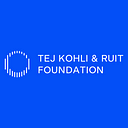2030 In Sight Mission
The World Health Organization’s World Report on Vision and The Lancet Global Health Commission on Global Eye Health both provide evidence that sight loss is a critical economic and development issue. These reports, produced by leading global organisations, emphasise the importance of integrating eye health into healthcare systems.
This vision for the sector is particularly relevant now, as the COVID-19 pandemic has shaken the world in unexpected ways, resulting in long-lasting social, health, and economic consequences such as the reversal of many great strides towards the elimination of extreme poverty. There is now an opportunity to develop resilient and responsive health systems which highlights the need for an equitable and inclusive rebuild. Therefore, the urgency of addressing eye health has never been greater.
The 2030 In Sight Strategy was started by IAPB (International Agency for the Prevention of Blindness) to build upon the achievements of the VISION 2020 initiative. 2030 In Sight is a global strategy aimed at eliminating avoidable blindness by the year 2030.
Improving eye health is essential to achieving the Sustainable Development Goals by 2030 and the UN principle of no one being left behind, which is something that the Tej Kohi & Ruit Foundation strives to achieve.
It is imperative that everyone worldwide has access to high-quality eye health services, and preventable sight loss is prioritised. To achieve this, the sector must work differently by elevating the issue of eye health, integrating it into broader systems, and activating demand from the ground up. Collaboration with organisations from other sectors, innovation with new partners, and embracing new ways of working and technological change are also critical.
It has been proven that improving eye health can help reduce poverty, improve educational outcomes, increase employment prospects, enhance productivity at work, and promote gender equity. However, universal access to early detection and prevention services, eye examinations, treatments, and rehabilitation is hindered by several challenges that must be overcome.
The 2030 Vision initiative focuses on four main pillars, which are:
1. Advocacy and awareness-raising
2. Health system strengthening
3. Integration
4. Innovation
Coming together across the world is crucial to achieving the 2030 In Sight mission. Unfortunately, there is a significant lack of understanding of the socioeconomic impacts of poor eye health and vision services worldwide. Fortunately, organisations such as the Tej Kohli & Ruit Foundation, the Himalayan Cataract Project, the Fred Hollows Foundation, and others have revolutionised how people in remote and developing regions receive and perceive eye care. By working together, non-governmental organisations (NGOs) and governments can make a lasting impact.
The absence of comprehension about the socioeconomic impacts of poor eye health and vision services has significantly affected financing and commitment to enhance these services. Many national healthcare systems are struggling to bridge the funding gap necessary to provide accessible eye care treatments and services. The World Report on Vision has estimated that the financial gap for untreated cataracts and refractive errors amounts to at least $24.8 billion USD, and recent research published in the Lancet Journal indicates that productivity losses could be as high as $411 billion USD.
The World Health Organisation’s World Report on Vision and The Lancet Global Health Commission on Global Eye Health have brought to light the critical economic and development issues associated with sight loss. The COVID-19 pandemic has further highlighted the need for resilient and responsive healthcare systems that prioritise eye health.
The 2030 In Sight Strategy, aimed at eliminating avoidable blindness by 2030, is a global initiative that is essential to achieving the Sustainable Development Goals and the UN principle of no one being left behind. The four pillars of the initiative: advocacy and awareness-raising, health system strengthening, integration, and innovation, offer a comprehensive approach to address the challenges faced in providing accessible eye care treatments and services worldwide.
Collaborating across organisations and sectors is necessary to bridge the financing gap and achieve lasting impact. Improving eye health can not only reduce poverty, improve educational outcomes, increase employment prospects, enhance productivity at work, and promote gender equity, but it is also an investment in the future of our global community.
To find out more about the Tej Kohli & Ruit Foundation and what we do visit: www.tejkohliruit.com.
For more information on Tej Kohli as a philanthropist visit tejkohliruit.com and to read more of his views go to his Medium.
To read about Tej Kohli as an investor visit Kohli Ventures.
Find out more about Tej Kohli: Tej Kohli the technologist investing in human triumph, Tej Kohli the philanthropist trying to cure the developing world of cataracts and Tej Kohli the London tycoon with a generous streak.
Check out our Womens History Month Series on my social media!
| Follow: Twitter | Instagram | LinkedIn | Facebook | YouTube |
